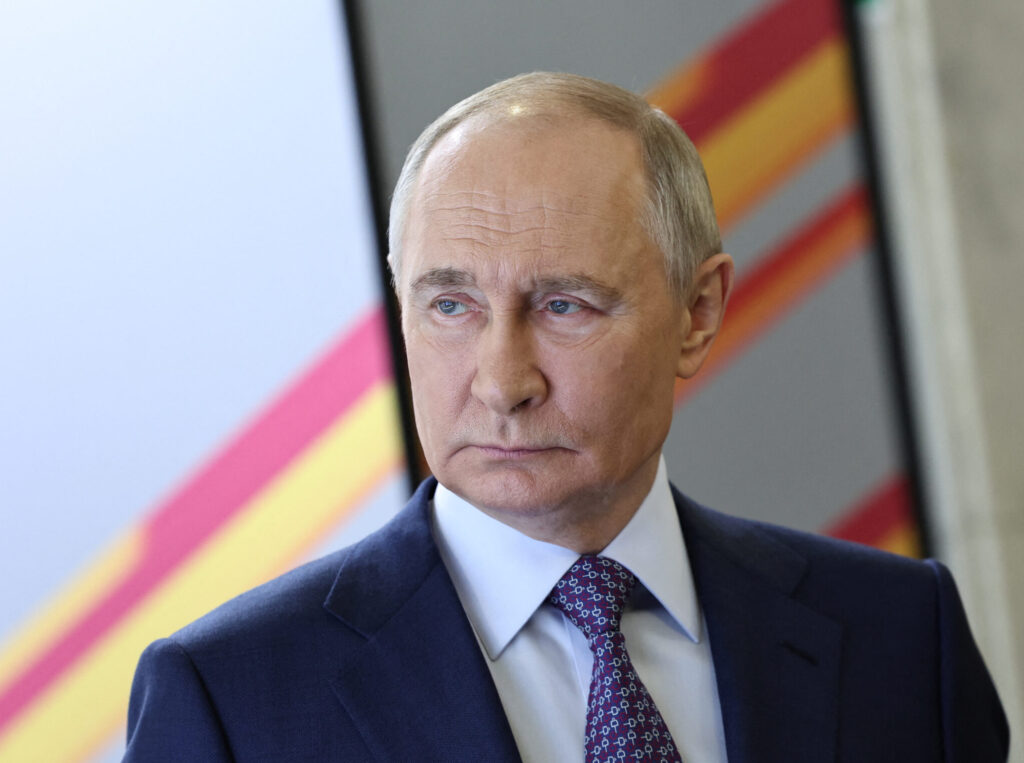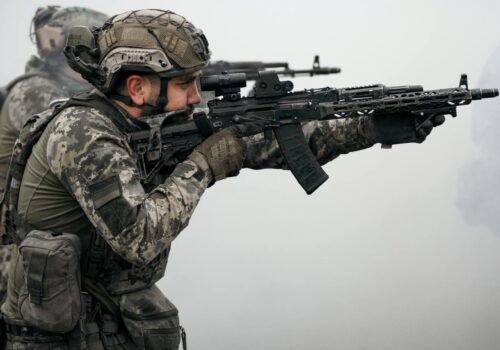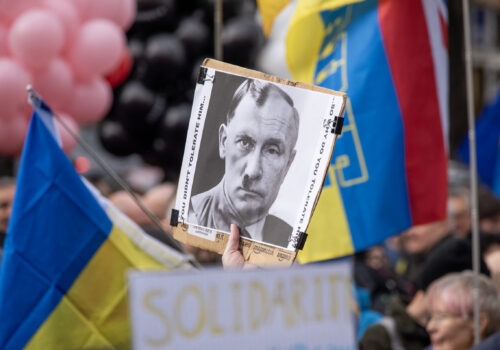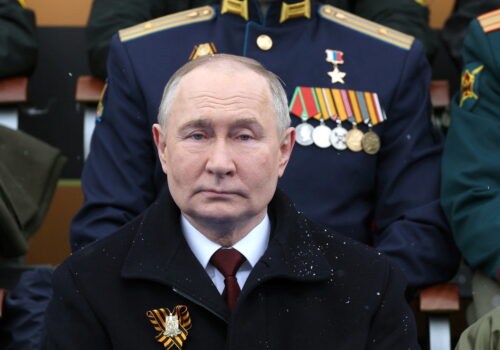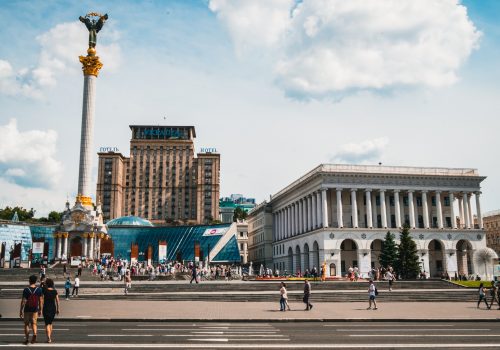Almost two months ago, Ukraine agreed to a United States proposal for an unconditional 30-day ceasefire. Russia still refuses to do likewise. Instead, Putin continues to engage in stalling tactics while escalating the war.
Since US-led peace talks began in February, Russia has carried out some of the deadliest attacks of the entire invasion targeting Ukrainian civilians. These have included a ballistic missile strike on a playground in Ukrainian President Volodymyr Zelenskyy’s hometown, Kryvyi Rih, that killed 18 people including 9 children. On Palm Sunday, Russia launched targeted strike on Sumy city center as civilians made their way to church, leaving 35 dead.
Some of these attacks have made international headlines. Many more have not. Every single day, the population in front line Ukrainian cities like Kharkiv in the east and Kherson in the south face relentless Russian bombardment. At night, millions of Ukrainians are forced to seek shelter as Russia launches wave after wave of missiles and drones at targets across the country.
As Russia intensifies its air offensive against Ukraine’s civilian population, the death toll is rising. According to UN officials, the number of Ukrainian casualties has spiked recently. During the first 24 days of April, 848 civilians were killed or wounded, representing a 46 percent increase on the same period one year ago.
Meanwhile, Russia is also escalating its offensive operations on the battlefield as Putin’s commanders seek to wear down Ukrainian resistance and achieve a breakthrough. This is leading to mounting Russian losses. The UK Ministry of Defense reports that in the first four months of 2025, Russia suffered approximately 160,000 casualties. If the current rate of attrition persists, this will become the costliest year of the war for Putin’s invading army.
Stay updated
As the world watches the Russian invasion of Ukraine unfold, UkraineAlert delivers the best Atlantic Council expert insight and analysis on Ukraine twice a week directly to your inbox.
Despite extensive evidence of Russia’s intention to escalate the invasion, the United States continues to pursue a vision of peace through compromise. Since talks began, the Trump administration has offered the Kremlin a range of concessions while pressuring Ukraine to back down on key issues such as the country’s NATO ambitions. A recent US peace proposal indicated that President Trump may even be prepared to officially recognize Russia’s 2014 seizure of Ukraine’s Crimean peninsula.
The tone of American diplomacy has shifted noticeably since Trump returned to the White House, with US officials now seeking to avoid any direct condemnation of Russia. In line with this new strategy, the United States has sided with Moscow on a number of occasions to vote against UN resolutions critical of the Kremlin. The US has also stepped back from international efforts to hold Russia accountable for alleged war crimes committed in Ukraine, defunding one flagship program and exiting another.
The Trump administration’s conciliatory approach toward Russia does not appear to be working. Far from offering concessions of his own, Putin has responded to the new US administration’s peace initiative by doubling down on his maximalist war aims. The Kremlin dictator insists on international recognition for Russia’s claims to Ukrainian territory, and demands that any peace deal must leave Ukraine disarmed and internationally isolated.
Eurasia Center events

The current lack of progress toward peace should come as no surprise. After all, the experience of the past two decades has demonstrated that there is nothing more likely to provoke Putin than weakness. When the West chose not to punish Russia for the 2008 invasion of Georgia, this paved the way for the 2014 invasion of Crimea and eastern Ukraine. The underwhelming Western response to Putin’s initial assault on Ukrainian sovereignty then set the stage for the full-scale invasion of Ukraine in February 2022.
Russian’s sense of impunity is now a crucial factor fueling the largest European invasion since World War II. While Putin is always ready to engage in diplomatic maneuvers, his evasive actions in recent months confirm that he has no real interest in a compromise peace. Instead, he is more confident than ever that he can outlast the West in Ukraine and achieve his objectives.
Russia’s invasion of Ukraine is a watershed event in world history that will define the future of international security for decades to come. If Western leaders allow Russia to continue bombing civilians and destroying the foundations of international law without consequence, a ruthless new world order will emerge and will be defined by the principle that might makes right. Putin and his authoritarian colleagues in China, Iran, and North Korea will dominate the global stage and will rewrite the rules to suit their expansionist agendas. No country will be secure.
Today, Ukrainians are paying the price for the West’s reluctance to confront Russia. If Putin is not stopped in Ukraine, many other countries will also count the cost of this failure.
Alyona Nevmerzhytska is CEO of hromadske.ua.
Further reading
The views expressed in UkraineAlert are solely those of the authors and do not necessarily reflect the views of the Atlantic Council, its staff, or its supporters.

The Eurasia Center’s mission is to enhance transatlantic cooperation in promoting stability, democratic values, and prosperity in Eurasia, from Eastern Europe and Turkey in the West to the Caucasus, Russia, and Central Asia in the East.
Follow us on social media
and support our work
Image: Russian President Vladimir Putin tours an exhibition at the Central Museum of the Great Patriotic War on Poklonnaya Gora ahead of the 80th anniversary of the victory over Nazi Germany in World War Two, in Moscow, Russia, April 30, 2025. (Sputnik/Alexander Kazakov/Pool via REUTERS)
